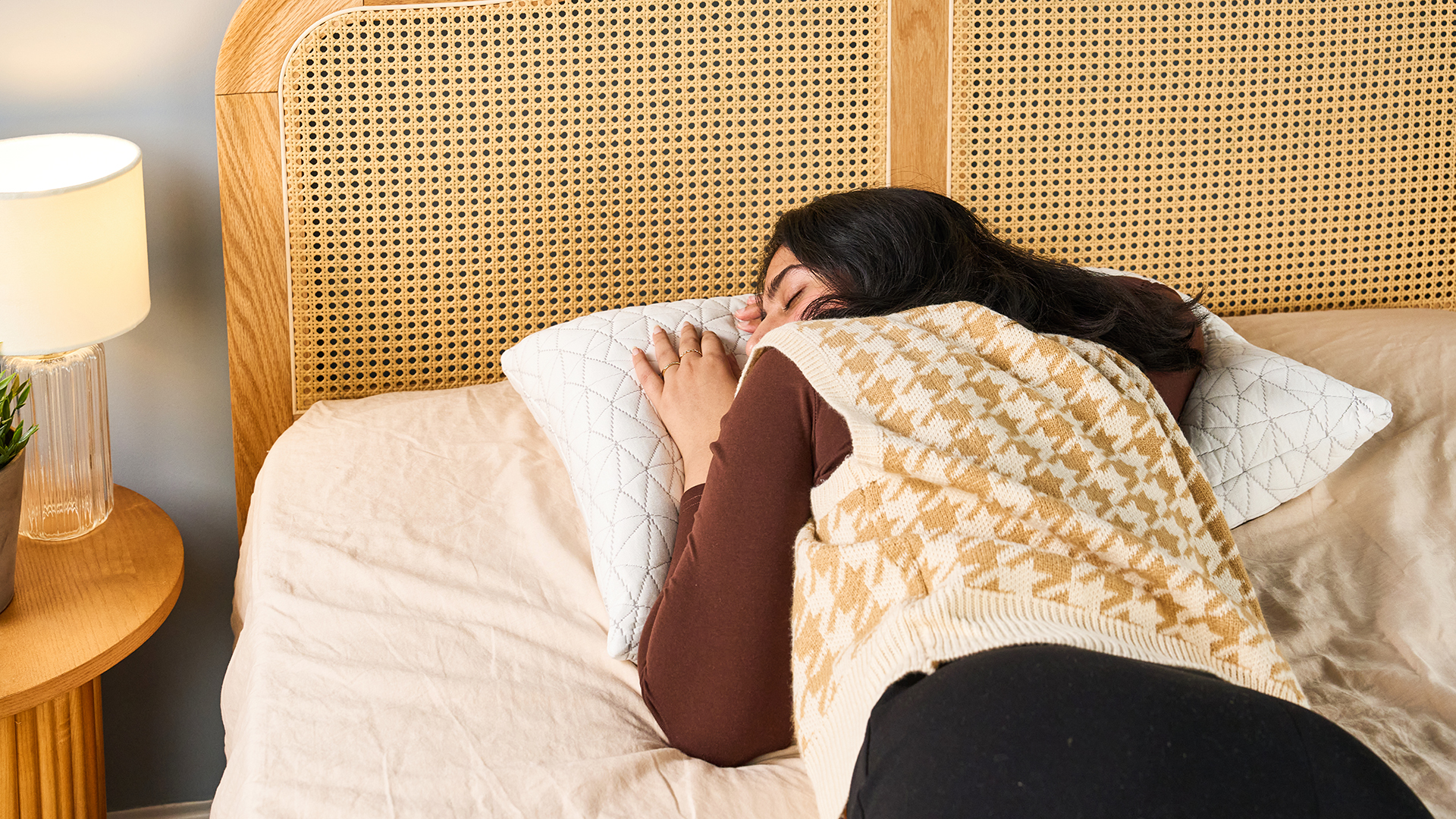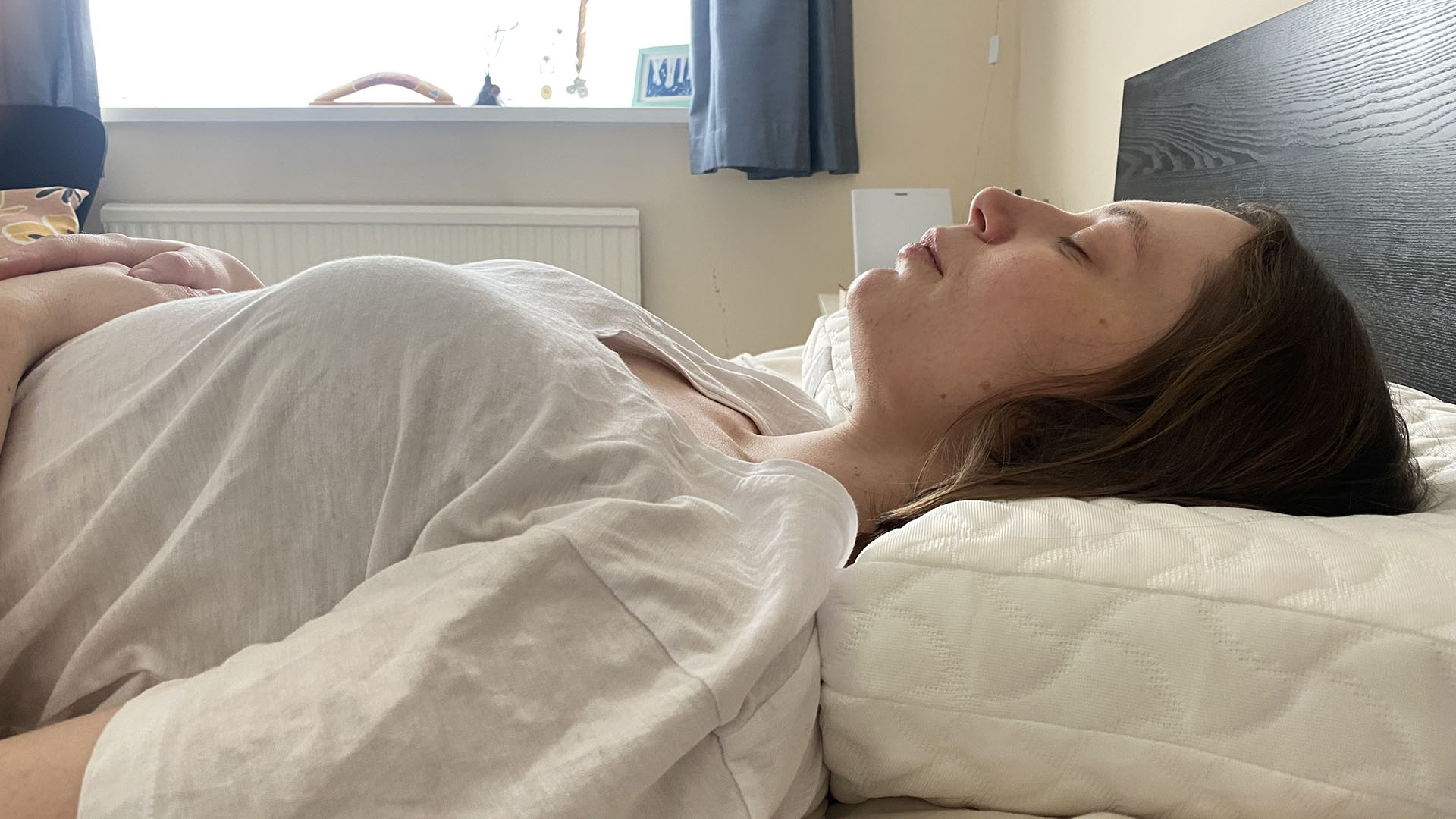Memory foam pillows won’t save everyone’s sleep — an honest look at their pros and cons
Do you really need a memory foam pillow for your sleep? Here’s everything you need to know

If you’re on the hunt for a good pillow, memory foam is a material you’ll frequently see, as it's often used for fill. Memory foam pillows are designed to mold to the shape of your head and neck, giving you more personalized feeling of comfort and support.
Their sink-in comfort, ability to help relieve pain and reasonable durability makes them popular, and several memory foam options feature in our best pillows guide. But are they really suitable for everyone?
To understand this better, we’re taking a closer look at the pros and cons of buying a memory foam pillow, including our recommendations on who should, and shouldn’t, consider them, as well as our top alternatives to shop instead. Read on to find out more...
What do memory foam pillows feel like to sleep on?

A synthetic material, memory foam is made from viscoelastic polyurethane and was created by NASA researchers in the 1960s to help combat the effects of gravitational force on non-commercial pilots (think astronauts and fighter pilots) during take-off.
Essentially, memory foam was designed as a shock-absorbing material to help relieve the intense pressure placed on pilots' bodies at this time. That pressure relieving ability is why the material began to be used in mattresses and bedding, and still is. In pillows, memory foam is generally used blended with microfiber.
If you sleep on a pillow made with memory foam you'll likely feel a sense of sinking in and notice that it contours to your shape, because memory foam responds to heat and pressure (both of which make it mold to whatever is pressing on it). It's a slow response material, which means it gradually returns to its original shape when you remove your body.
The benefits of sleeping on a memory foam pillow
Memory foam pillows offer several advantages that can elevate your sleep experience. Here are the key benefits:
1. Support and pressure relief
Pillows made with memory foam are going to contour to your body, cradling your head and neck and helping to keep your neck and spine aligned — this can help you avoid back pain issues due to misalignment.
Because memory foam provides incredible pressure relief, the muscles in your neck will be under less stress, meaning you're less likely to feel stiffness or aches in the morning. And, memory foam distributes weight evenly, reducing stress on key pressure points, like the shoulders for side sleepers.
It's also worth noting that you can get memory foam pillows in different lofts and firmness levels (and adjustable memory foam pillows will allow you to customize the height and firmness), depending on if you want a super-soft, ultra 'sink in' feel, or more firm, contoured support.
2. Durability
Memory foam pillows are generally more durable than traditional fills like down, feathers and microfiber.
This is because of memory foam's unique ability to mold to your shape, and retain its original form after the pressure is released. The material is designed to withstand repeated compression and therefore be less susceptible to wear and tear compared to other fills.
However, be aware that even the best memory foam will sag over time. If you're looking for an even more durable pillow fill, consider latex. The natural responsiveness of latex means it will maintain its shape and will last.
3. Allergy friendly

Memory foam is one of the top pillow materials to opt for if you're an allergy or asthma sufferer.
Unlike down and feather fills which can trigger allergies in some sleepers, memory foam is a hypoallergenic material. It is naturally resistant to dust mites and other common allergens, because its dense cell structure stops them from accumulating.
4. Motion isolation
The best memory foam mattresses are excellent at absorbing movement, meaning you'll experience less disturbance during the night if you share a bed with a restless partner.
Likewise, memory foam pillows (especially shredded foam ones) are likely to isolate motion well, but because they're generally better suited to sleeping in one position (because you sink in), it's a feature we're more likely to recognize in mattresses.
The drawbacks of sleeping on a memory foam pillow
No pillow is 100% perfect. Here are a list of drawbacks to consider before finalising your memory foam pillow purchase:
1. The sink-in sensation can feel claustrophobic
Yes, memory foam pillows provide excellent contouring, but for some sleepers this might actually prove to be an issue.
Compared to the responsive bounce offered by materials like natural latex, the sink-in feel of memory foam pillows, and the fact they mold to your shape, may prove to be claustrophobic for some. That can be compounded by the fact that these features can make it harder to change positions quickly during the night.
2. Heat retention
Memory foam works in part by absorbing your body heat to adapt to your form and provide pressure relief. However, it also has a tendency to retain that heat.
This is due to its dense cell structure, which traps heat and reduces air flow. While many bedding manufacturers combat this in memory foam pillows using tools like cooling gels, breathable covers and an open-cell foam structure (which are features you can find also find in the best cooling mattresses), these may be insufficient for some hot sleepers.
The top alternatives to rely on instead are natural materials known for being cool and breathable, like cotton, latex, wool and down.

3. Off-gassing smell
New memory foam products, including pillows, can emit a temporary, harmless chemical smell due to the release of VOC gases (volatile organic compounds) which is known as off-gassing.
While this is generally safe and dissipates quickly, some sleepers may find it a bit too strong. It helps to always air out a new memory foam pillow, and you can do this by placing it in a well-ventilated area (for example, in a room with open windows) for several days before use.
4. Heavier than most other types
Memory foam pillows can feel heavier than other types, especially those filled with plush down or feathers, because of the dense structure of the foam. And, because they require body heat to soften and mold to your shape, when memory foam pillows are colder, they can feel even firmer.
We've talked about latex as a good alternative to memory foam here, but when it comes to weight, it's worth keeping in mind that latex pillows sit on the heavier end of the scale too.

5. Not easily washable
If you're looking for an easy to maintain, fuss-free pillow, memory foam may not be your first choice.
That's because most memory foam pillows are spot-clean only (especially the solid foam models) with only their top covers being removable and machine washable. Need more details? Check out our guide on how to wash a memory foam pillow.
Who should consider using a memory foam pillow?
Now that we've discussed the pros and cons, it's clear that memory foam pillows will suit some sleepers more than the others.
In particular, they're good for side sleepers who need a taller, firmer pillow that can fill the gap between their head and shoulders. Since memory foam contours to your shape, it's a great choice. And, the pressure relief provided by memory foam is ideal for cushioning the shoulders, a key pressure point for side sleepers.
Taller back sleepers who require a pillow that will support the natural curve of their neck without pushing them forward should also appreciate one crafted from memory foam.
Thanks to its hypoallergenic properties, a memory foam pillow is also a great choice for allergy sufferers. The top notch pressure relief also makes it a solid option for those struggling with neck aches or shoulder pain, but don't want the rigid feel of a traditional cervical pillow.
If you do decide to make a swap to a memory foam pillow, consider making these five other nighttime swaps for better sleep.

Who should avoid a memory foam pillow?
Stomach sleepers are likely to find memory foam pillows to be too thick, and as a result, that they can elevate the head and neck too much. This can lead to a compromised spinal alignment and poor sleep posture, which in turn can cause aches and pain. A good alternative is a low-loft pillow, we'd recommend the Brooklyn Bedding Premium Shredded Foam pillow, which is adjustable.
Memory foam pillows are possibly a 'no' for hot sleepers too as they retain heat, which can result in overheating and nightsweats — unless they feature cooling elements like the Coop Sleep Goods Cool+, the top cooling pillow in our best pillows guide.
As a synthetic product, memory foam pillows also can't claim to be organic. Fortunately, there are other natural materials like cotton, wool, latex or kapok, used to make great organic alternatives that provide natural breathability and temperature regulation. However, be sure to look for proof the materials are organic, which you can do by checking your pillow has certifications like GOTS (Global Organic Textile Standard).

Becky is a Sleep Staff Writer at Tom’s Guide covering all things sleep-related including product reviews, research studies, news and explainers. She works on specialist bedding content and is responsible for buyer’s guides like the best pillows for all sleepers and best mattress protectors focusing on popular brands such as Tempur-Pedic, Avocado, Coop Home Goods and more. Becky is a PPA accredited journalist who is keen to explore the intricacies of sleep, its effects on skincare, mental wellbeing and work performance. While not thinking of sleep, she can be seen reading in cosy bookshops or learning about global food culture.
You must confirm your public display name before commenting
Please logout and then login again, you will then be prompted to enter your display name.
